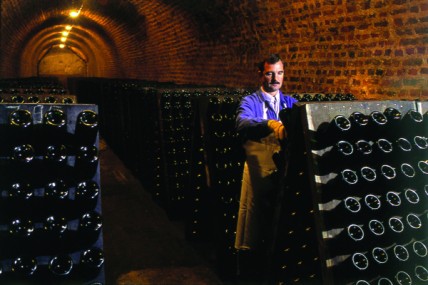Champagne producers debate new disgorgement rule
Date£º
2015-04-21 15:19 Source£º
www.decanter.com Author:
Chris Mercer Translator:
A debate is underway in Champagne over whether there should be a mandatory resting period for wines following disgorgement, before bottles are released on the market.

Should there be a minimum cellaring period for Champagne after disgorgement?
Supporters of a minimum resting period following disgorgement believe the rule could increase the overall quality image of Champagne on the market.
Decanter.com understands that a recent meeting saw 19 out of 20 chefs de caves vote in favour of introducing a minimum cellaring period for Champagnes after disgorgement, although no specific time period was agreed.
A spokesperson for the Comite Champagne, the regional trade body, told Decanter.com that the measure was one of several issues being discussed.
¡®We do not have any deadline on this idea,¡¯ said Comite Champagne spokesperson Thibaut Le Mailloux. ¡®Such a project will [only] take place if an agreement is found among the growers and houses.¡¯
Disgorgement, which is the removal of yeast cells after second fermentation and prior to dosage, already divides opinion in Champagne. Some producers, such as Bruno Paillard, print disgorgement dates on labels on the basis that a Champagne¡¯s taste profile can alter significantly in the months after that point. Bollinger has its recently disgorged ¡®RD¡¯ label and Krug has begun printing ID codes on bottles to allow consumers to find disgorgement dates.
Jean-Baptiste Lecaillon, chef de cave and deputy managing director at Cristal owner Champagne Louis Roederer, said a minimum cellaring rule ¡®can only be beneficial for Champagne¡¯.
He said, ¡®Our experience here has always shown that a minimum three month, post-disgorgement period is very beneficial for the wine, allowing it to ¡°recover¡± from the disgorgement process. It makes the wine more balanced and harmonious.¡¯
He said Louis Roederer Brut Premier non-vintage is cellared for at least six months after disgorgement, with vintage Champagnes are held back for a minimum eight months.